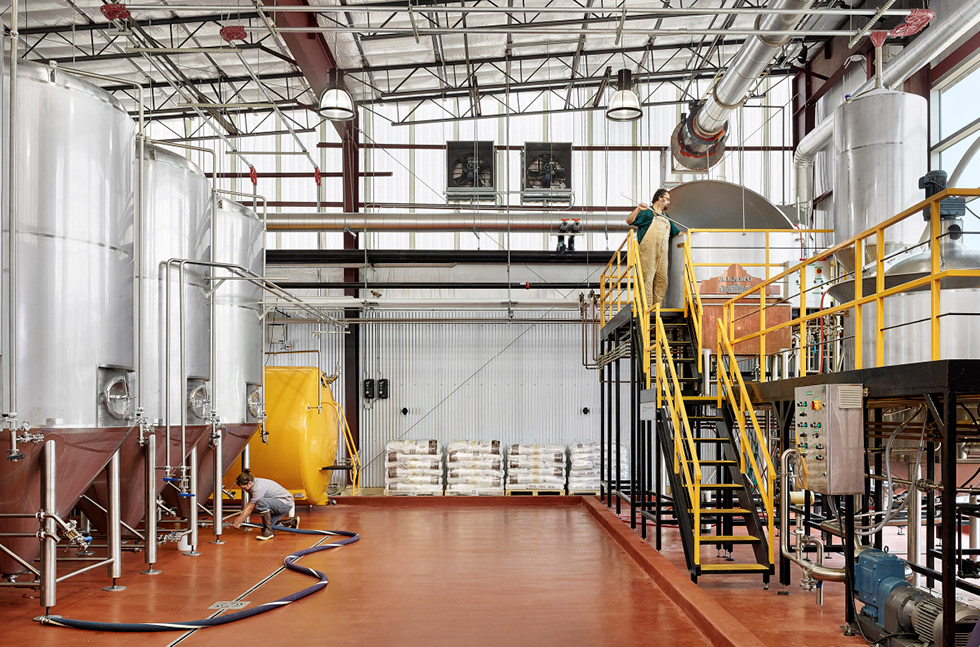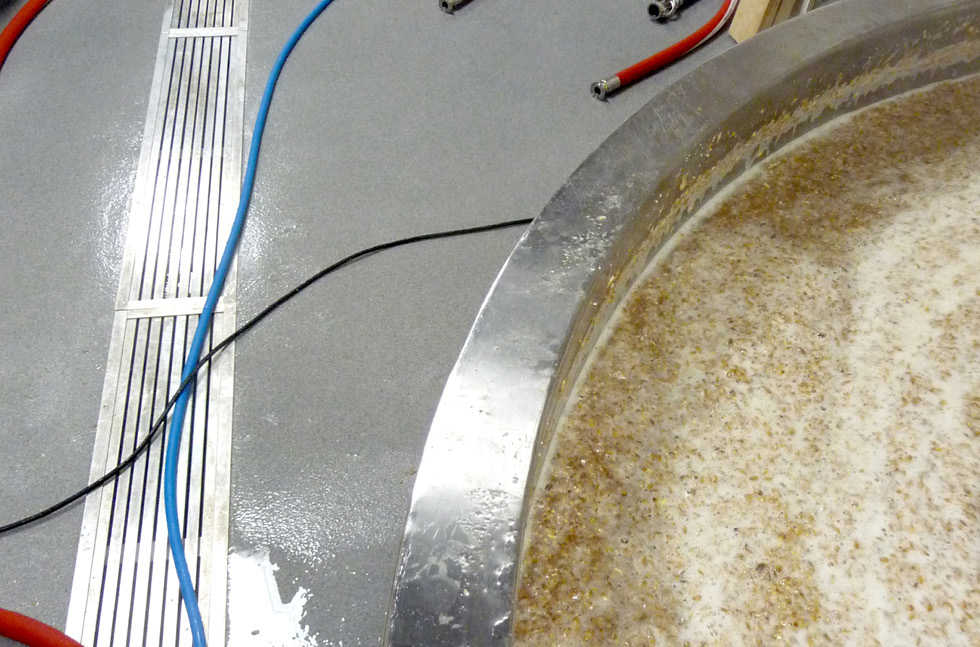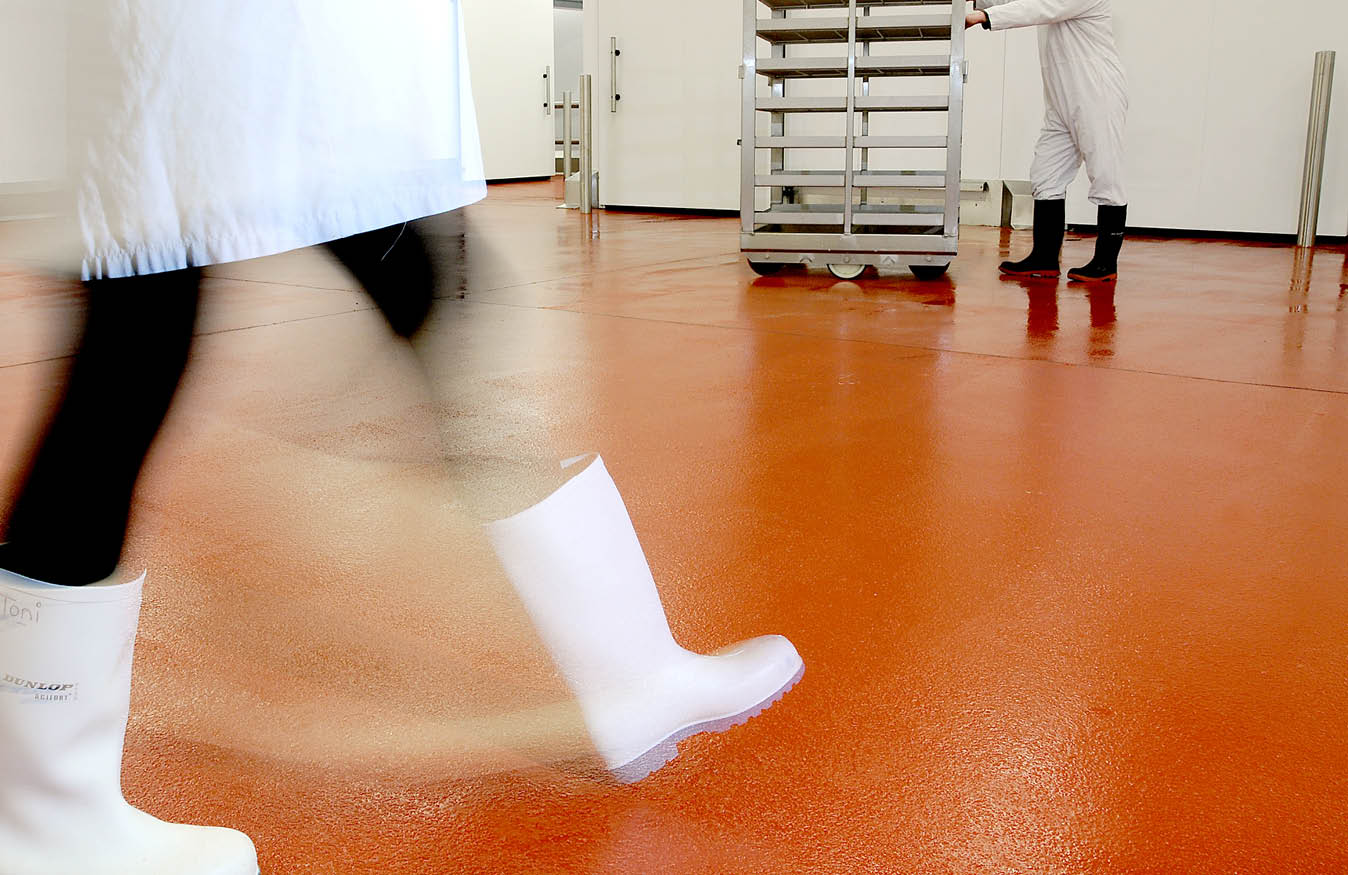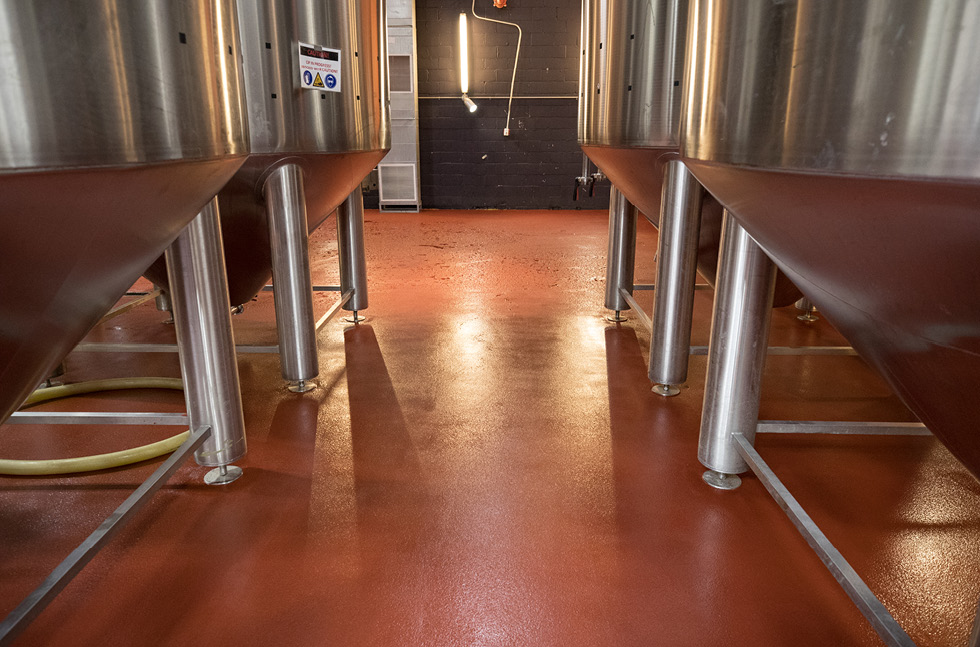Just as the title suggests, this post will offer flooring solutions that could help to keep you on your feet after a few beers – producing and packaging a fair few beers that is!
It is unsurprising that the process of brewing beer involves a lot of liquid, and it is because of this that we often categorise breweries as wet processing areas by and large. To explain why we do this, let’s have a quick taste of a generic brewing process.

Join us for a recap on a generic brewing process
1. The process begins with malts being crushed together in order to extract fermentable sugars to produce a milled product called grist. At the mash conversion stage, the grist is mixed with heated water in order to break down the malt’s starch into sugars.
2. After this, the mash is pumped into the lauter tun, where wort is separated from the grain husks. The wort is collected in a vessel called a kettle, where it is brought to a controlled boil before the hops are added.
3. From here, the wort is transferred into a whirlpool for the wort separation stage. During this stage, malt and hop particles are removed, leaving a liquid that is ready for cooling and fermentation.

Yeast converts sugary wort into beer by producing flavours, carbon dioxide and alcohol
4. Fermentation involves yeast being added as the wort is poured into a vessel. The yeast converts the sugary wort into beer by producing a range of flavours, carbon dioxide and alcohol.
5. Once the beer has been left to mature, it is filtered, carbonated and transferred to tanks, ready to be packaged after a cellaring process.
When handling this much liquid, even on the smoothest production line and in the smallest craft brewery, the risk of spillages is very high. In any facility, spillages often equal slippery floors, which is an immediate health and safety risk to staff and visitors alike.
To combat this, training staff to clean spillages quickly and clearly displaying ‘wet floor’ signs can help to avoid slipping accidents, however washing down the area still results in a wet floor that is likely to be slippery!

Slip resistance is key to having a safe facility for staff and visitors
With more and more breweries opening their doors to visitor tours, keeping the facility as safe as possible can reduce the likelihood of accidents and in worse case scenarios, litigation.
When specifying the flooring materials for any wet processing area, the risk of slipping should be factored in, as many flooring materials can incorporate slip resistance. Once such flooring material is cementitious polyurethane.
Resin flooring is available in a range of textures and can be graded with broadcast aggregates in order to increase the anti-slip profile of the product and meet local slip resistance standards AS4586-2013 and SA HB 198 2014.

A range of textures can be specified for the anti-slip profile
It is important to note that coarsely textured surfaces, such as positively graded resin systems, can be more difficult to keep clean, therefore consideration should be made to incorporate a semi-gloss top coat where heavy slip resistance and ease of cleaning are both of critical importance.
Have you seen the other posts in our brewery series?
If you would like more advice on slip resistant flooring solutions for your brew house, please leave a comment below and our experts will get back to you.





